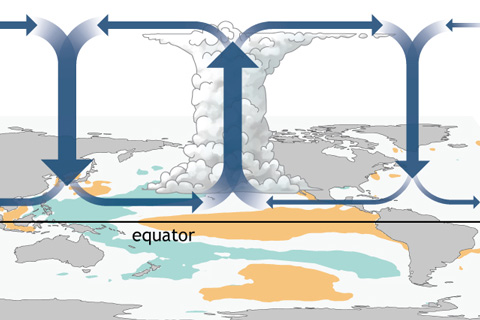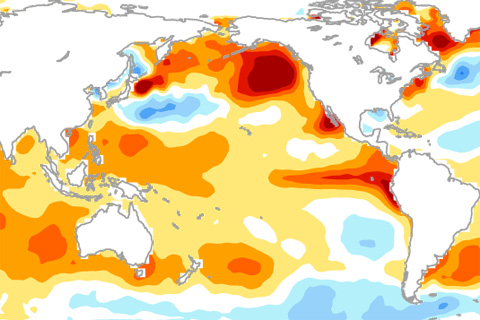
If you are someone who wants more or stronger ENSO events in the future, I have great news for you–research supports that. If you are someone who wants fewer or weaker ENSO events in the future, don’t worry–research supports that too.

Forecasters are still calling for a 65% chance of El Nino conditions being met in the next few months. Isn't this late for the start of an ENSO event?

El Niño could bring increased rain to California. How might this affect the threat of wildfire?

Along with ENSO, what other climate patterns might be useful for predicting temperatures and precipitation in the United States?

Where is El Niño? How is this year different from 2012 when El Niño was predicted, but never arrived?

The chance of an El Nino has dropped to about 65%. What led to this change in the forecast?

How do changes in the equatorial Pacific Ocean impact places much farther away? The answer for the tropics, at least, lies in changes to the equator-wide atmospheric circulation called the Walker Circulation.

Why hasn't El Niño been declared yet? The answer might lie in the gradients of sea surface temperatures across the tropical Pacific Ocean.

Sea surface temperatures are up. So why haven't forecasters declared El Niño conditions?

One of ENSO’s most important influences is to the Indian Monsoon—the large-scale circulation pattern that brings the Indian subcontinent the vast majority of its yearly rainfall. And while La Niñas tend to increase monsoon rainfall, the monsoon’s relationship with El Niño can be a little more complicated.